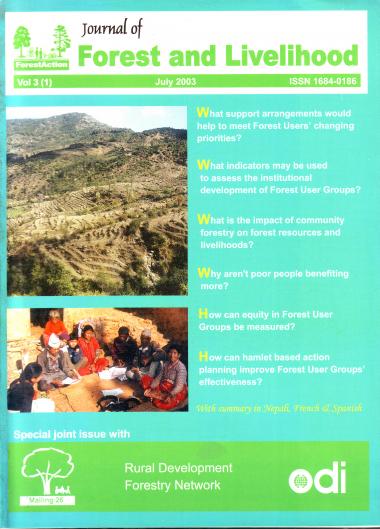Community Forest Management in the Middle Hills of Nepal: The Changing Context
DOI:
https://doi.org/10.3126/jfl.v3i1.59729Keywords:
community forest management, middle hills of nepal, community forest management of nepalAbstract
This paper outlines the policy context and resource base for community forestry in Nepal. Drawing on a study of 11 Forest User Groups (FUGs) in the Middle hills region, the paper examines the process of FUG formation and post-formation support. The implementation process of community forestry demands rapid institutional change at Department of Forests (DoF) and village level, and changes in
working relationships between these levels. The DoF’s main responsibilities in the Middle hills are changing from the traditional role of forest policing and protection, and moving towards FUG facilitation. However, the limited capacity of the DoF has become the key constraint to implementation of community forestry, and finding a solution may involve re-organizing the DoF support role. As new
priorities emerge in FUGs (relating to community development for instance) involving multiple support agencies is becoming increasingly necessary.
Downloads
Downloads
Published
How to Cite
Issue
Section
License

This work is licensed under a Creative Commons Attribution-NonCommercial 4.0 International License.
CC-BY-NC: This license allows reusers to distribute, remix, adapt, and build upon the material in any medium or format for noncommercial purposes only, and only so long as attribution is given to the creator.





